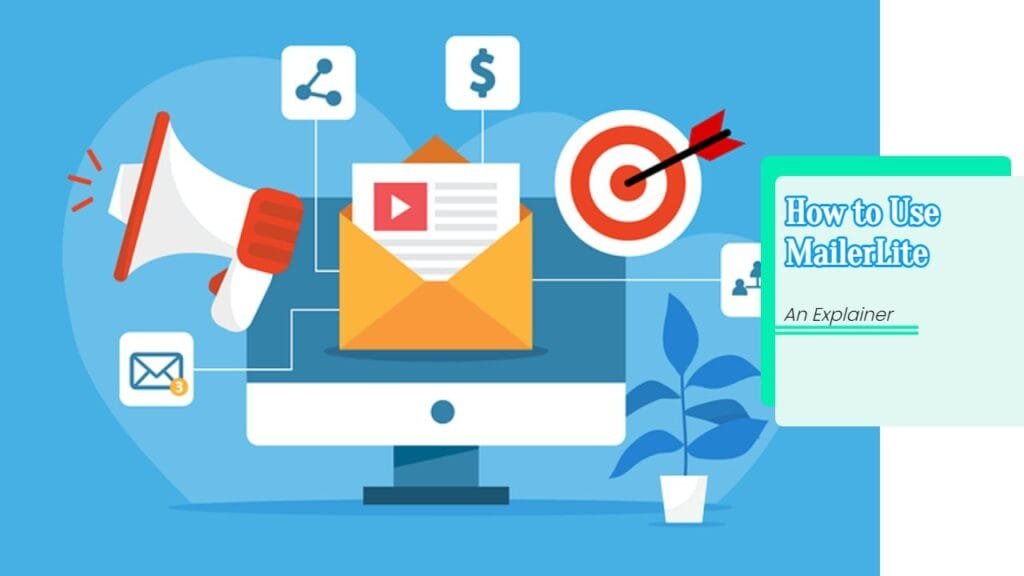Email Marketing Trends
Staying on top of the latest email marketing trends is vital for any business looking to maximize its digital marketing efforts. This section examines important insights regarding open rates and click rates.
Open Rate Insights
The open rate is a key performance indicator that reflects how effectively your subject lines resonate with your audience. In 2023, the average email open rate across all campaigns was 41.31%, with open rates varying by industry from 32.02% to 46.94% (MailerLite). This highlights the necessity of tailoring your subject lines to enhance engagement.
| Industry | Average Open Rate (%) |
|---|---|
| Overall | 41.31 |
| Industry Low | 32.02 |
| Industry High | 46.94 |
Personalization plays a crucial role in increasing open rates. Tailored emails are known to generate a 139% increase in click rate when compared to generic, one-time sends (Adobe). A well-crafted, personalized email can significantly boost your outreach efforts.
Click Rate Analysis
Click rates measure the effectiveness of your email content and calls to action (CTAs). A higher click rate signals that your recipients found the content engaging and were motivated to take action. The trend indicates that personalization is a strong driver of these rates, with nearly 60% of email subscribers influenced by personalization in their purchasing decisions (Phonexa).
Here are some vital stats regarding click rates:
- Personalized emails lead to substantially improved engagement.
- Around 50.7% of subscribers make purchases monthly, influenced by the tailored content.
Implementing a strategy focused on this trend can strengthen your email campaigns and improve your overall marketing outcomes. Email continues to remain a top channel for lead generation, with 79% of marketers ranking it in their top three channels (Phonexa).
For further insights on maximizing your marketing strategies, you may explore related topics such as current marketing trends and digital marketing trends.
Engagement Metrics
Analyzing engagement metrics is pivotal in gauging your email marketing performance and understanding how well your audience interacts with your content. Key metrics include click-to-open rates, unsubscribe rates, and bounce rates.
Click-to-Open Rate Data
The click-to-open rate (CTOR) indicates how effectively your email drives your audience to click on links within the message. In 2023, the average CTOR across all email marketing campaigns was 7.38%. Some industries experienced significantly higher CTORs, such as the construction industry, which had a CTOR of 14.01%, and manufacturing at 12.67% (MailerLite).
| Industry | Average CTOR (%) |
|---|---|
| Construction | 14.01 |
| Manufacturing | 12.67 |
| Overall | 7.38 |
To enhance your CTOR, focus on crafting engaging content and compelling calls to action in your emails. Experiment with personalization, as hyper-targeted recommendations can lead to higher engagement levels.
Unsubscribe Rate Trends
Unsubscribe rates help you understand if your audience finds your emails relevant. A rising unsubscribe rate may indicate that your messaging needs improvement or that your audience segments require refinement. On average, a healthy unsubscribe rate is typically below 0.5%. Regularly review your unsubscribe metrics to adjust your strategy accordingly, ensuring your emails align with your audience’s expectations.
To decrease unsubscribes, consider segmenting your audience based on customer behavior and preferences. Personalized emails and valuable content can make a significant difference in retaining subscribers.
Bounce Rate Analysis
Bounce rates reveal the percentage of emails that could not be delivered to the recipient’s inbox. There are two types of bounces: hard bounces and soft bounces. Hard bounces occur when an email address is invalid, while soft bounces may result from temporary issues with the recipient’s server.
An acceptable bounce rate is generally below 2%. High bounce rates can affect your sender reputation negatively. Regularly clean your email list to remove invalid addresses and ensure quality engagement with your audience.
| Bounce Rate Type | Description |
|---|---|
| Hard Bounce | Invalid email address |
| Soft Bounce | Temporary server issue |
Monitoring these engagement metrics will inform your overall strategy and allow you to align your email campaigns with your audience’s preferences effectively. By focusing on improving CTOR, managing unsubscribe rates, and minimizing bounce rates, you can enhance the effectiveness of your email marketing efforts. For broader insights, explore marketing trends and current marketing trends relevant to your strategies.
Importance of Mobile Optimization
In today’s digital landscape, optimizing emails for mobile devices is no longer optional; it is essential. With more than 60% of emails being opened on mobile devices, it is critical for you to prioritize mobile optimization in your email marketing campaigns (C&I Studios).
Mobile Open Rates
Understanding mobile open rates is vital for your email marketing strategy. Here is a table breaking down the open rates related to mobile devices:
| Device Type | Percentage of Opens |
|---|---|
| Mobile Devices | 60% |
| Desktop | 30% |
| Tablet | 10% |
This data highlights that the majority of your audience is likely to open emails on their mobile devices, making mobile optimization a key factor in your campaign’s success.
Benefits of Mobile Optimization
Mobile optimization brings numerous benefits that enhance overall engagement and effectiveness of your email campaigns. Some of the key advantages include:
Improved Open Rates: Emails optimized for mobile devices have a higher likelihood of being opened. By ensuring that your emails look appealing on smaller screens, you encourage more recipients to engage with your content (C&I Studios).
Higher Click-Through Rates: Optimized emails contribute to higher click-through rates, with mobile users finding it easier to interact with content. Well-designed emails make navigating and engaging with your offerings more seamless (Faster Capital).
Enhanced User Experience: Mobile-first responsive design should be an essential component of your email marketing strategies. Focusing on user experience ensures that your emails are easily consumable and engaging, allowing for better performance in your campaigns (Faster Capital).
Leverage Mobile-Specific Features: Optimizing for mobile allows you to leverage unique features specific to mobile devices, such as GPS, click-to-call buttons, and easier navigation.
By prioritizing mobile optimization in your email marketing efforts, you can significantly improve engagement rates and overall effectiveness. For more insights into the latest trends in marketing, check out our articles on current marketing trends and email marketing trends.
Personalization Impact
In today’s competitive marketing landscape, personalization is a key strategy that significantly enhances email marketing effectiveness. By tailoring your messages to meet the specific needs and preferences of your audience, you can achieve higher engagement rates and drive purchasing decisions.
Personalization Statistics
Personalized emails outperform generic messages in several notable ways. Consider the following insights:
| Statistic | Value |
|---|---|
| Open Rate Increase | 20% higher for personalized emails |
| Revenue Growth | 5.7 times more from personalized versus non-personalized emails |
| Subscribers influenced by personalization | 60% |
| Monthly Purchases influenced by personalization | 50.7% |
These statistics demonstrate the substantial impact of personalization on consumer behavior. Personalization is not merely a marketing trend, but a necessary tactic for any successful campaign. For further reading on this topic, explore more about personalized marketing trends.
Segmenting Strategies
Segmentation is another powerful aspect of personalization. By categorizing your email list based on various criteria like demographics, purchase history, and engagement levels, you can create tailored messaging that resonates more with each subscriber. Effective segmentation strategies can lead to remarkable outcomes:
- Revenue Increase: Segmented email lists can boost email marketing revenue by as much as 760%.
- Projected Revenue: Email marketing revenue is expected to hit nearly $11 billion by the end of 2023.
According to research, consumers who prefer personalized experiences are ten times more likely to become high-value customers, making 15 or more transactions annually. Additionally, 80% of shoppers are more inclined to engage with brands that offer personalized experiences.
To maximize your email campaigns, consider employing the following strategies:
- Personalize Subject Lines: Use the recipient’s name or interests to increase open rates.
- Dynamic Content Fields: Tailor content based on individual behavior or preferences.
- Triggered Emails: Send messages based on specific customer actions to keep engagement high.
By integrating these approaches into your email marketing efforts, you will not only align with current email marketing trends but also enhance the overall effectiveness of your campaigns. For more insights into the benefits of targeted strategies, check out our article on current marketing trends.
Revenue and Value Growth
Global Email Marketing Value
The global value of email marketing is on an impressive trajectory, projected to rise from $7.5 billion in 2020 to $17.9 billion by 2027. This growth reflects the increasing recognition among businesses of the effectiveness of email as a marketing channel. Notably, 87% of all marketers are planning to increase their budgets to leverage this channel further, responding to the evolving landscape of consumer engagement and marketing strategies.
| Year | Market Value (in billions) |
|---|---|
| 2020 | 7.5 |
| 2021 | 9.3 |
| 2022 | 11.0 |
| 2023 | 12.9 |
| 2024 | 14.6 |
| 2025 | 15.7 |
| 2026 | 17.0 |
| 2027 | 17.9 |
Influence of Email Personalization
As the value of email marketing grows, personalization emerges as a crucial strategy for driving consumer engagement and maximizing revenue. According to a report by Epsilon, consumers who favor personalized marketing are ten times more likely to be high-value customers, transacting 15 or more times annually. Additionally, 80% of shoppers are more inclined to engage with brands that offer a personalized experience.
Furthermore, nearly 60% of email subscribers indicate that personalization influences their purchasing decisions. Among those, approximately 50.7% make purchases on a monthly basis due to personalized emails.
In terms of performance metrics, personalized emails have demonstrated a 139% increase in click rates compared to static emails. They also have an open rate exceeding 20% higher than generic emails, contributing to a staggering revenue generation that is 5.7 times higher than non-personalized communications (Adobe).
Implementing personalized strategies in your email campaigns not only enhances engagement but also significantly boosts your overall marketing effectiveness. For insights into evolving email marketing trends and how they can influence your business’s growth, be sure to explore additional resources available on the platform.
Subject Line Strategies
Crafting an effective subject line is essential in email marketing trends. It’s the first impression you make on your audience and can significantly impact your email’s open rate.
Crafting Engaging Subject Lines
Creating engaging subject lines involves several important strategies. Here are key elements to consider:
Be Specific and Urgent: Subject lines should convey a clear message and evoke a sense of urgency. Using action verbs can encourage recipients to take immediate action. For example, “Grab 20% Off Today Only!” effectively communicates both urgency and value.
Test Different Approaches: Experimentation is crucial. No single email list will respond the same way to subject lines. Testing various styles—both bold and traditional—within the same audience segment can provide insights into what resonates best.
Write the Subject Line Last: Consider writing the subject line after crafting the email content. This approach helps ensure the subject reflects the email’s key message effectively (SendGrid).
Utilize Engaging Preview Text: The preview text is often displayed alongside the subject line, providing additional incentive to open the email. Optimizing this text can enhance engagement levels.
| Strategy | Description |
|---|---|
| Be Specific and Urgent | Use clear, action-oriented language to drive urgency. |
| Test Different Approaches | Experiment with various subject line styles within segments. |
| Write the Subject Line Last | Finalize content first for a more accurate subject line. |
| Utilize Engaging Preview Text | Optimize preview text to complement and entice openings. |
Personalization Importance
Personalization in email marketing is becoming increasingly important. The HubSpot report highlights that personalized subject lines can significantly boost engagement and improve your overall ROI. Marketers are using AI tools to analyze subscriber preferences and behavior, enabling them to craft subject lines that speak directly to individual interests.
You should aim to segment your audience based on preferences, demographics, or past interactions. This information allows you to tailor subject lines to meet their specific needs and increase the likelihood of opening the email.
| Personalization Method | Benefit |
|---|---|
| AI Data Collection | Enhances understanding of subscriber preferences. |
| Audience Segmentation | Enables tailored messaging for different customer groups. |
| Behavior Analytics | Allows for dynamic content in subject lines based on past engagement. |
Leveraging these strategies will help you stay ahead of the curve in email marketing, allowing you to connect more effectively with your audience. For an in-depth exploration of other marketing trends, visit our sections on digital marketing trends and current marketing trends.
AI Integration
Artificial Intelligence (AI) is revolutionizing the way you approach email marketing. With AI tools at your disposal, you can significantly enhance the effectiveness of your campaigns, leading to improved engagement and performance.
AI Tools in Email Marketing
AI-powered tools such as Phrasee, Seventh Sense, and rasa.io are transforming email strategies by streamlining various tasks. These tools assist in:
- Subject Line Creation: Automation allows for the development of compelling subject lines that are more likely to grab attention.
- Mailshot Timing Optimization: AI tools analyze user behavior to determine the optimal time to send emails, maximizing open rates.
- Personalized Newsletters: AI facilitates the creation of tailored content that resonates with specific audience segments, enhancing relevance and engagement.
This integration of AI capabilities not only saves time but also enhances the overall performance of your email campaigns.
| Tool Name | Key Feature |
|---|---|
| Phrasee | Automates subject line creation |
| Seventh Sense | Optimizes timing for mailshots |
| rasa.io | Creates personalized newsletters |
For more information about utilizing these tools, explore additional marketing trends.
Enhancing Email Campaigns
Integrating AI into your email marketing strategy can elevate open and click-through rates. By leveraging AI’s analytical capabilities, you can gain insights into consumer behavior, allowing for more precise targeting.
AI contributes to:
- Increased Open Rates: Engaging subject lines and timely delivery lead to more recipients opening emails.
- Higher Click-Through Rates: Personalization powered by AI caters to the interests of your audience, encouraging them to take action.
AI’s role in enhancing email marketing aligns with the current emphasis on data-driven strategies. Harnessing these advancements can give you a competitive edge in your campaigns. To keep abreast of the latest developments in the field, consider exploring current marketing trends and latest marketing trends.
Global Engagement Trends
Understanding global engagement trends in email marketing is crucial for optimizing your strategy. By keeping an eye on email performance metrics, you can improve your campaigns and engage more effectively with your audience.
Email Engagement in 2024
In 2024, the email marketing landscape saw significant shifts in engagement rates, reflecting the efforts marketers have made to produce more relevant content. The average email open rates increased by 12.84 percentage points, reaching new heights. Click-through rates also witnessed an increase of 1.36 percentage points, showcasing improved campaign effectiveness.
| Metric | 2023 | 2024 | Change (%) |
|---|---|---|---|
| Open Rates | N/A | +12.84 | N/A |
| Click-through Rates | N/A | +1.36 | N/A |
| Unsubscribe Rates | N/A | +0.05 | N/A |
| Bounce Rates | N/A | -0.24 | N/A |
Unsubscribe rates remained stable, with a slight increase of 0.05 percentage points, while bounce rates experienced a decrease of 0.24 percentage points. These trends can be attributed in part to advancements in devices, especially from Apple, and the ongoing focus on personalized content (GetResponse).
Regional Performance Analysis
Email performance varies significantly across different regions. In North America, open rates surged by 14.2%, hitting 45.3%, with click-through rates climbing to 4.7%, an increase of 1.81%. Bounce rates in North America were among the highest globally at 2.68%, albeit with improved performance from the previous year.
| Region | Open Rates (%) | Click-through Rates (%) | Bounce Rates (%) |
|---|---|---|---|
| North America | 45.3 (+14.2%) | 4.7 (+1.81%) | 2.68 |
| South America | N/A | N/A | -0.9% |
| Oceania | N/A | N/A | -0.5% |
Countries like Brazil and India stood out, achieving the highest click-through and open rates globally. In India, click-through rates jumped by 6.5% to 8.2%, with a remarkable click-to-open rate of 31.8%. Meanwhile, the U.S. boasted a healthy increase in open rates to 45.6%, and Canada recorded the highest click-through rates at 8.6% (GetResponse).
By staying informed about these trends, you can adapt your email strategies accordingly and enhance your overall engagement metrics. For more insights on how to align with current trends, consider exploring current marketing trends or digital marketing trends.





















